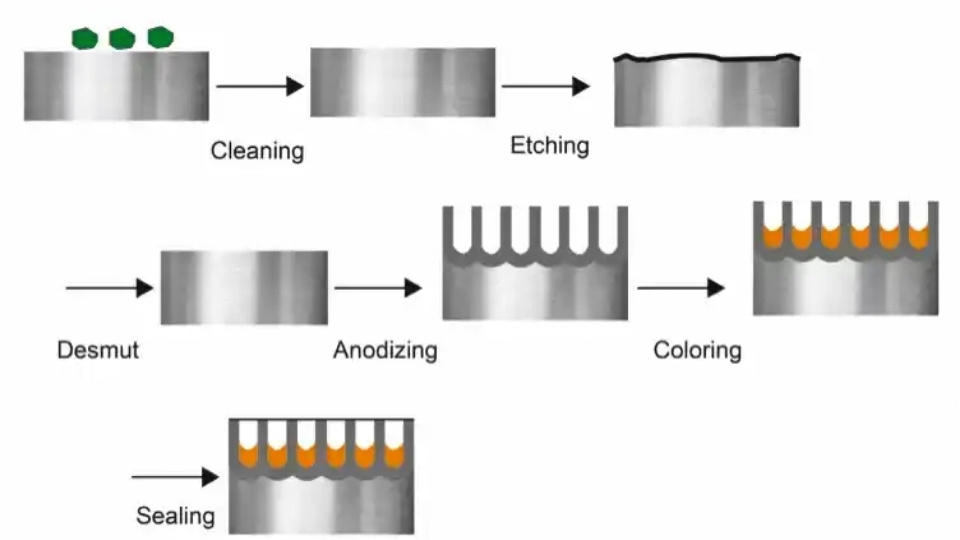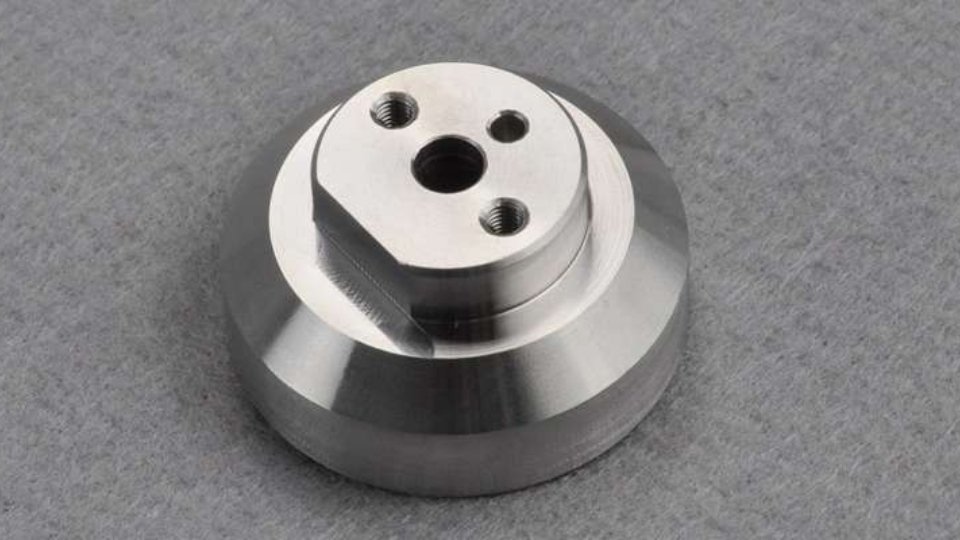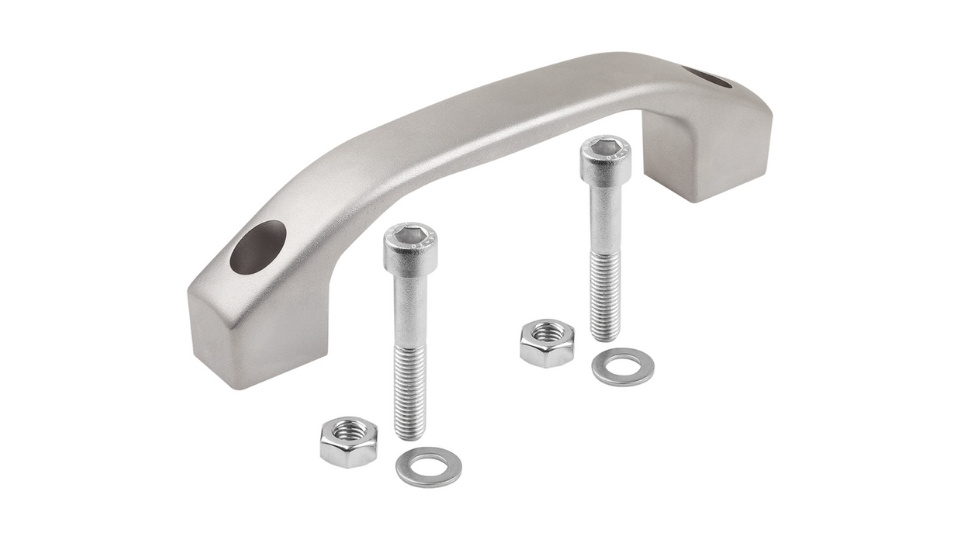“Anodized steel provides a tough, protective layer that resists corrosion while maintaining its sleek appearance. It’s the perfect solution for combining durability with a polished look.”

Metals are famous for their strength and shiny appearance; thus, they can be employed in various ways. However, as strong as they are, their surfaces are prone to corrosion. To overcome this issue, metals are typically coated with an oxide layer through a process known as anodization.
Anodization is usually done on non-ferrous metals such as aluminum. However, the question arises: Can ferrous metals like steel be anodized? The answer is in the affirmative. This article focuses on anodizing steel and examines why this method is not used in industries as it should be.
What is Anodised Metal, & Why is it Important?
Anodised metal is an electrochemical process that forms a thin oxide layer on the surface of metals, which may be between 8 and 30 micrometers thick. This layer serves a dual purpose: For instance, it acts as a shield to the metal from wearing and rusting and enables the incorporation of colors that enhance the appearance of the metal. Anodizing is done in an electrolytic cell. The solution is usually acidic; a sulfuric, oxalic, or chromic acid solution is typically used. In this configuration, the metal to be anodized is the anode, while the cathode is often the same material or, in many cases, aluminum.
In this circuit, the metal at the anode dissolves when an electric current flows through the circuit, forming an oxide layer on the metal’s surface. To get the best results, the process has to be supervised and controlled for several parameters, including temperature, voltage, and current.
Anodizing is most often used for specific types of steel alloys. However, it can also be used on other metals, including titanium and magnesium, though the conditions for the latter are different.
Try Prolean Now!
What is Anodised Steel?
Anodised steel refers to steel subjected to a chemical process to create a layer of oxide on its surface. This layer mainly enhances corrosion protection and adds a coat of cosmetic value to the material.

Anodised steel
The anodizing process was initially used on aluminum parts. It is an electrolytic process in which an aluminum oxide layer is developed on the aluminum surface through a reaction with sulfuric acid. What is important to note here is that this oxide layer is not just a layer that forms on the aluminum surface but is formed from the aluminum itself. In the case of anodised steel, the protective oxide layer is developed differently.
What Makes Anodised Steel Different From Anodized Aluminum?
Steel is not a pure metal but an alloy made of iron and carbon with other elements in small proportions; different amounts of carbon produce various types of steel. The most popular type is stainless steel, which combines nickel, chromium, iron, and a little carbon (approximately 0.08%). Other types are high-speed, tool, mild, and carbon steel.
Anodised steel looks similar to anodized aluminum, but iron in steel changes the anodizing process. Usually, anodizing is done through an acid bath to form an oxide layer, but here, with steel, the oxide is created as ferric oxide or Fe2O3, known as rust. Rust does not shield against corrosion; instead, it increases the rate at which a material corrodes.
Steel is anodized differently using other metals, such as zinc or aluminum, to avoid rusting. The method also involves an electrolytic process, but the rust is not allowed to form on the steel surface; another metal layer is put on the steel surface.
Anodised Steel: Galvanic Corrosion Formation
Galvanic corrosion can occur when anodizing steel through an electrolytic bath. In this process, the surface of the steel is coated with an aluminum layer created by a chemical reaction. Nevertheless, the two metals are from different electrochemical series, creating a galvanic reaction.
The rate at which corrosion is formed depends on the contact area of the steel, aluminum, or any other metal used. Moreover, it’s important to note that the rise in contact areas also results in a surge in the corrosion rate. This corrosion prevents the development of metallurgical bonds between the steel and the oxide layer of another metal. That is why stainless steel is used in aluminum anodizing; it is straightforward to form a stable connection.
Anodizing Process of Steel

Steel anodizing process
Employing aggressive reagents such as anodizing steel and sodium hydroxide (NaOH) is essential. Anodizing aims to have an anodic film on the surface of the metal to enhance the corrosion capacity. Concerning the most used steel coatings, it is possible to mention sodium hydroxide or potassium hydroxide (KOH) coatings.
The critical parameters must be managed throughout the anodizing process to obtain the best outcome. Some of the process parameters are sensitive and should be controlled effectively to improve the anodizing process and the formed coatings, as discussed below;
- Concentration and composition of the acidic solution
- Concentration and composition of the acidic solution
- Implementation Time To Process
- Voltage applied
- Temperature of the solution
- Pre-treatment of the steel
Steps to Anodize Steel
- Preparation: First, wash the steel with deionized water to remove any contaminants on the steel’s surface.
- Submersion: Soak the steel in NaOH or KOH solution with a concentration of 50%.
- Setup: Solder the steel piece to the positive terminal(anode) of a power supply. The counter electrode, which may be steel, platinum, or nickel, is another critical component of the cell.
- Solution Maintenance: Keep the solution’s temperature constant and stir the electrolyte appropriately with a magnetic stirrer.
- Electrolytic Process: Take a wire with a metallic core, dip it into the electrolyte solution, and then connect the two ends of the wire to a battery. This will create a passive film on the steel’s outer part, enhancing its protection.
The thickness of the anodic coating depends on the concentration of the acidic solution in which the steel is immersed and the time it takes to do so. As a rule, the longer the submersion time, the thicker and more resistant the film is obtained.
When steel is anodized, a magnetite (Fe3O4) coating forms on the surface of the steel. While this coating is chemically similar to rust, it offers decent protection to the base metal. The newly anodized surface is of different colors according to the angle at which it is viewed; this is one of the characteristics of this process. This visual effect is why anodised steel is applied to products such as utensils, the appearance of which is a critical aspect of the product. Higher voltages and temperatures can enhance the formation rate of the anodic layer, but these factors must be kept under check to make the process cost-effective.
Try Prolean Now!
Benefits of Anodised Steel
Steel is anodized in a machine shop to generate its anodized surface. However, anodizing is not only a surface treatment—it has several other significant advantages.
Corrosion Resistance
Anodizing creates a layer on steel that will protect it from corrosion caused by moisture. It forms a magnetite layer, a black oxide, but the presence of iron makes it have a rainbow-like color. This magnetite film plays the role of a passivating layer, which enhances the capacity of the steel to resist rusting and corrosion.
Increased Durability
Applying an oxide coating to steel is detrimental to improving its life. The magnetite layer produced during anodizing is much more wear-resistant than the untreated steel. This makes the anodised steel less prone to scratching and gouging by more complex materials, thus prolonging the part’s life.
Better Abrasion Resistance
Abrasion can be described as wearing a metal surface by rubbing it against another surface. Anodised steel has a rough surface, making it easier for the dyes to be absorbed, thus creating a more robust and wear-resistant surface. This makes it possible to have the anodized layer or any paint placed on top of it to be very resistant to wear on the surface.
Alternative Methods to Enhance Steel Properties
Steel is used in many industries, including construction, manufacturing, infrastructure, and transport. Due to its flexibility, steel undergoes several treatments required by different industries. However, other techniques, besides hard coat anodizing, can significantly improve steel’s properties.
Passivation

Stainless steel passivation
Passivation treatment of steel’s surface to increase its resistance to corrosion and oxidation. While anodizing creates an oxide layer through the anodization process, passivation uses acids such as nitric acid or organic acids to dissolve free iron on the surface of the steel. Iron removal forms a layer of oxide that shields the base metal from the environment, reducing rusting.
Electropolishing

Stainless steel electropolishing
Electropolising is an electrochemical process that assists in finishing the steel surface. It is the reverse process of electroplating. Passivation is done to form a passive layer on the surface of the steel. In contrast, electropolishing strips off a thin layer of the material from the steel’s surface and makes it appear shiny. The process requires the connection of the steel to the anode of a direct current source of electricity and immersion in an electrolyte solution for phosphoric and sulfuric acids. When the current passes through the solution, the iron ions are oxidized and dissolved, and the steel polishing at the submicroscopic level occurs.
Comparing Alodine, Anodizing, and Powder Coating
Here’s a table comparing alodine, anodizing, and powder coating. (For enriched information, please visit our detailed guide on alodine vs anodize).
| Parameter | Alodine | Anodizing | Powder Coating |
| Corrosion Resistance | Moderate; temporary protection | High Corrosion resistance, ideal for outdoor use | Excellent; long-term outdoor use |
| Surface Hardness | Minimal enhancement | Significant increase; wear-resistant | Enhanced; durable against wear |
| Color Options | Limited (clear or gold) | Limited due to natural translucence | Extensive, customizable finishes |
| Chemical Resistance | Low; prone to chemical attack | Low; not suitable for solid chemicals | Good; withstand most chemicals |
Related To: Anodized Vs. Powder Coat: Which Is Better For Your Parts?
Anodized Steel Vs. Anodize Stainless Steel
Anodised steel also has a layer of oxide, which helps with corrosion and wear. However, it is not fully protected against rust, mainly when operating in unfavorable circumstances. Stainless steel is not entirely corrosion-immune; some types are even used in marine applications. Both materials are very similar in their mechanical properties, with stainless steel having a slight advantage in general toughness and reliability. It is a good material for many applications and has a better performance-to-price ratio in challenging environments than anodized steel.
Considerations for Anodizing Steel
Anodizing is primarily applied to metals such as aluminum and titanium, but it can also be done on steel in some cases. However, the following factors should be considered before anodizing steel.
Aluminum anodizing is not frequently used commercially with steel because it is comparatively expensive and has few advantages over other metals. Anodizing requires the metal to be dipped into an electrolytic bath, which implies that the part has to be suspended in the bath. The process requires hooks or chains to be incorporated into the part. Otherwise, the steel may not have an even anodized layer on the material’s surface.
Moreover, anodizing also creates a layer on the steel part’s surface, increasing its size. This change in thickness affects the tolerances of intricate contours and alters the machining finish and surface roughness. Furthermore, steel is anodized at 70°C, which may prove costly in energy used when anodizing large quantities of steel.
Overall, anodizing can provide steel with a protective and corrosion-resistant surface finish. Other techniques, such as passivation, phosphatization, and electropolishing, can also enhance steel’s properties.
How ProleanTech Can Help You In Your Anodizing Projects
ProleanTech’s anodizing service is intended to protect aluminum from corrosion and provide a range of colors to meet the project’s design intent. We do both Type II and Type III anodizing on aluminum, so your parts will also be durable and aesthetically pleasing.
We are staffed with professional engineers who are always willing to assist in your anodizing projects and offer you the best solutions for your projects. Contact ProleanTech today for your free quote; we will happily help you achieve your dream project.
Try Prolean Now!
Conclusion
Surprisingly, even metals self-healing against corrosion, such as aluminum, can be provided with additional protection. Anodizing is amongst the cheapest ways to enhance steel and aluminum alloy properties for increased usability. However, when anodizing is applied to steel, it is less effective, and rust may develop on the material’s surface, reducing its strength.
Although anodizing steel is usually done in a laboratory, it is not practical and costly for mass production. That is why there are other methods of surface treatment of steel, such as passivation, electropolishing, and phosphatizing, which are more efficient and practical.
FAQs
Q1: Can titanium be anodized?
It is possible to anodize titanium in the same way as aluminum. The process usually involves immersing the titanium in a trisodium phosphate bath. Type II anodizing is mainly used for wear resistance, while Type III anodizing is used for color.
Q2: Which is better, anodized stainless steel or aluminum?
Anodized aluminum is usually used because it offers a rugged and corrosion-resistant surface that can be further colored. Nevertheless, anodizing is also possible for stainless steel, but it is more complex and applied less often.
Q3: What metals can not be anodized?
Iron and steel, for instance, cannot be anodized in the usual way because the oxide layer is rust, which degrades the material.




0 Comments